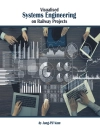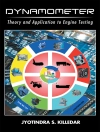This book explores how advances in graphic processing units (GPUs), programmable logic devices (TPUs), and field-programmable gate arrays have altered the serverless computing landscape (FPGAs). Distributed system architectures and implementations have undergone significant changes due to the popularity of serverless computing. Making and releasing product applications, doing market research, and maintaining customer interactions might all benefit from the reduced infrastructure...
Spis treści
Serverless Computing: New Trends and Future Directions.- Punching Holes in the Cloud: Direct Communication Between Serverless Functions.- Hybrid Serverless Computing: Op...
Kup ten ebook, a 1 kolejny otrzymasz GRATIS!
Język Angielski ● Format PDF ● Strony 316 ● ISBN 9783031266331 ● Rozmiar pliku 8.9 MB ● Wiek 02-99 lat ● Redaktor Rajalakshmi Krishnamurthi & Adarsh Kumar ● Wydawca Springer International Publishing ● Miasto Cham ● Kraj CH ● Opublikowany 2023 ● Do pobrania 24 miesięcy ● Waluta EUR ● ID 9013092 ● Ochrona przed kopiowaniem Społeczny DRM












